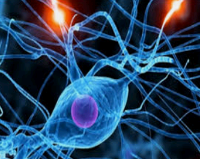Anticonvulsant Studies of Methanol Extract of Hippocratea welwitschii
Main Article Content
Abstract
The dried root of Hippocreatea welwitschii Oliv. is used as a folk remedy for the treatment of epilepsy in the Ukunafum traditional system of medicine in Akwa Ibom, South South Nigeria. We carried out anticonvulsant screening of methanol extract of Hippocratea welwitschii Oliv utilizing the 4-amino phyridine, picrotoxin, N-methyl-D-aspartate (NMDA) and effects of flumazenil on the extracts on PTZ-induced seizures in mice. The doses used for the extract were 125, 250, and 500 mg/kg. The extract offered 70% protection against NMDA-induced clonic seizures. The extracts offered no protection against picrotoxin. The extract did not produce a rational protection against 4-AP induced seizure. However, there is an upsurge in the mean onset of seizure and time of death in the tested animals. The results suggest the presence of anticonvulsant compounds. Further investigation for isolation of active compounds and elucidation of the mechanism of anticonvulsant action is required.
Downloads
Article Details

This work is licensed under a Creative Commons Attribution-NonCommercial-NoDerivatives 4.0 International License.
References
1. Rates SMK. Plants as source of drugs. Toxicon. 2001; 39(5): 603-613.
2. Kamal JM, Pharmacological activities of the Genus Globimetula and Scurrula. J Sci and Math Lett. 2024; 12(1) 58-71.
3. Tripathi AS, Chitra V, Sheikh NW, Mohale DS, and Dewani AP. Immunomodulatory activity of the methanol extract of Amorphophallus campanulatus (Araceae) Tuber. Trop J Pharma Res. 2010; 9(5): 451-454.
4. Kamal JM, Chemical constituents of loranthaceae (Mistletoes): A Review. J Sci and Math Lett. 2024; 12(2): 1-24.
5. Gurib-Fakim A, Medicinal plants: traditions of yesterday and drugs of tomorrow. Mol asp Med. 2006; 27: 1-93.
6. Muhammad KJ, Jamil S, Basar N, Magaji MG, Anticonvulsant studies on the isolated compounds from the leaves of Scurrula parasitica L (Loranthaceae). Malaysian J Fund Appli Sci. 2019; 15(6): 806-810.
7. Onyekere PF, Enebechi CK, Nnamani DO, Peculiar-Onyekere CO, Okonta EO. Phytochemical analysis and antimicrobial activity of methanol extract of the leaves of Hippocratea Welwitschii OLIV. (CELASTRACEAE). African J Pharm Res Develop. 2019; 11(2): 106 -115.
8. Okoh-Esene RU, Okogun JI, Okwute SK, Thomas SA. Preliminary phytochemical and mineral analyses of the root of Hippocratea welwitschii. Arch Appl Sci Res. 2012; 4(1): 315-322.
9. Burkill HM, The useful plants of west tropical Africa, second edition. The White Friars Press Ltd, Great Britain. 1985; 2: 352-364.
10. Okwute SK, Okoh-Esene RU, Okogun JI. Two Triterpenoids isolated from the root of Hippocratea welwitschii (Celastraceae)-Oliv. Fuw Trends Sci Tech J. 2018; 3(2): 537-540.
11. Muhammad KJ, Afolayan MO, Danlami U, Onyenekwe PC, Magaji MG. Anticonvulsant activity of Hippocratea welwitschii Oliv. (Celastraceae) root extracts on chicks and swiss mice. Trop J Nat Prod Res. 2024; 8(1): 6045-6050.
12. Musa MA, Abdullahi IM, Kamal MJ, Magaji GM. Phytochemical screening and anticonvulsant studies of ethyl acetate fraction of Globimetula braunii on laboratory animals. Asian Pac J Trop Biomed. 2014; 4(4): 285–289.
13. Yamaguchi S, Rogawski MA. Effects of anticonvulsant drugs on 4-aminopyridine-induced seizure in mice. Epilepsy Res. 1992; 11(1): 9-16.
14. Salih MAM, Ali A, Mustafa AAA. Substance in broad beans (Vicia faba) is protective against experimentally induced convulsions in mice. Epilepsy Behav. 2008; 12(1): 25-29.
15. Navarro Ruiz A, Bastitidas Ramires BE, Garcia Estrada J, Gara L, Gardon P. Anticonvultant activity of Casimine adults in comparison to Phenytoin and Phenobarbital. J Ethnopharmacol. 1995; 45(3): 199-206.
16. Ngo-Bum E, Palanken MM, Njikam N, Talla TE, Taiwe GS, Nkantchoua GCN, Ngoupaye GT. The decoction of leaves of Phyllantus discoideus possesses anticonvulsant and seductive properties in mice. Int J Pharmacol. 2009; 5:168-172.
17. Schmutz M, Portet C, Jeker A, Klebs K, Vassout A, Allgeier H, Heckendorn R, Fagg G E, Olpe H R, Van Riezen H. The competitive NMDA receptor antagonists CGP 37849 and CGP 39551 are potent, orally-active anticonvulsants in rodents. Naunyn-Schmiedebergs Arch Pharmacol. 1990; 342: 61–66. doi: 10.1007/BF00178973.
18. Behzadnia H, Naseri A, Emamhadi M, Ghadarjani S, Aghaei I, Dehpour A. Effect of hydroalcoholic extract of Stachys lavandulifolia on pentylenetetrazole-induced seizures in male mice: The role of GABAergic and opioidergic systems. Basic Clin Neurosci. 2022; 13(1): 107-116. doi: 10.32598/bcn.2021.2299.1.
19. Ya’u J, Yaro AH, Malami S, Musa MA, Abubakar A, Yahaya SM, Hussaini IM. Anticonvulsant activity of aqueous fraction of Carissa edulis root bark. Pharma Biol. 2015; 53(9): 1329-1338. https://doi.org/10.3109/13880209.2014.981280.
20. Haberny KA, Paule MG, Scallet AC, Sistare FD, Lester DS, Hanig JP, Slikker JW. Ontogeny of the N-Methyl-D-Aspartate (NMDA) receptor system and susceptibility to Neurotoxicity. Toxicol Sci. 2002; 68(1): 9-17. https://doi.org/10.1093/toxsci/68.1.9.
21. Loscher W, Schmidt D. Which animal model should be used in the search for new anti-epileptic drugs? A proposal based on experimental and clinical considerations. Epilepsy Res. 1994; 2: 145-181.
22. Raza ML, Zeeshan M, Ahmad M, Shaheen F, Simjee SU. Anticonvulsant activity of DNS II fraction in the acute seizure models. J Ethnopharmacol. 2010; 128: 600-605.
23. Magaji MG, Yaro AH, Musa AM, Anuka JA, Abdu-Aguye I, Hussaini IM. Anticonvulsant activity of butanol fraction of methanol root bark extract of Securinega virosa Roxb (ex Willd) Baill. in laboratory animals. J Med Plant Res. 2013; 7(28): 2128-2135. DOI: 10.5897/JMPR12.1209.
24. Wickenden AD. Potassium channels as antiepileptic drug targets. Neuropharmacol. 2002; 43: 1055-1060.
25. Mahmud B, Musa SA, Magaji MG, Danjuma NM. Phytochemical and anticonvulsant screening of three medicinal plants used in the treatment of epilepsy in the south-Western part of Nigeria. Afr J Pharm Res Dev. 2024; 16(1): 39-49.
26. Danladi S, Sule MI, Muhammad MA, Yaro AH. Isolation and characterization of some flavonoids from the leaves of Globimetula braunii (Loranthaceae) growing on Terminalia catappa L. (Combretaceae). Trop J Nat Prod Res. 2021; 5: 2133-2136.


